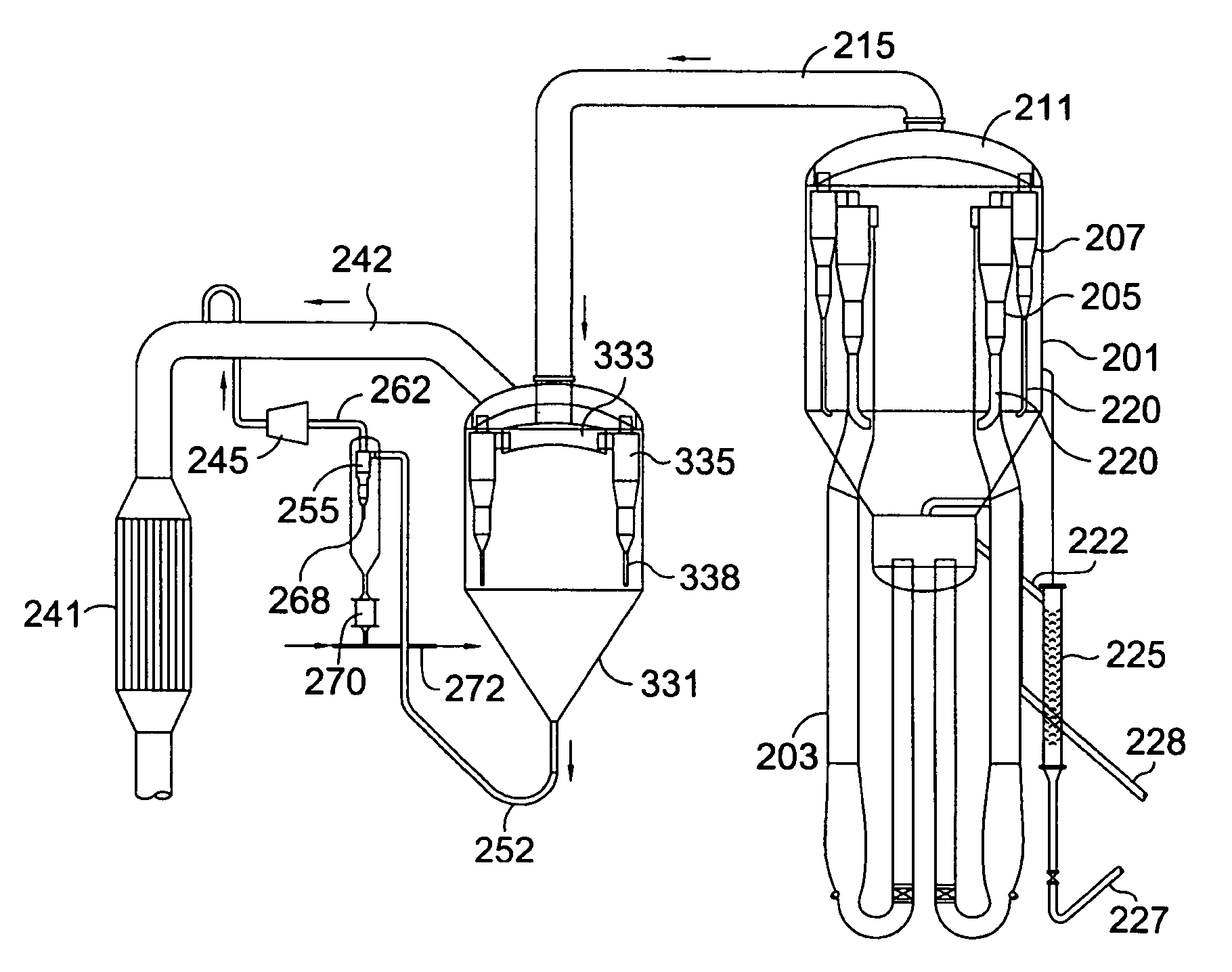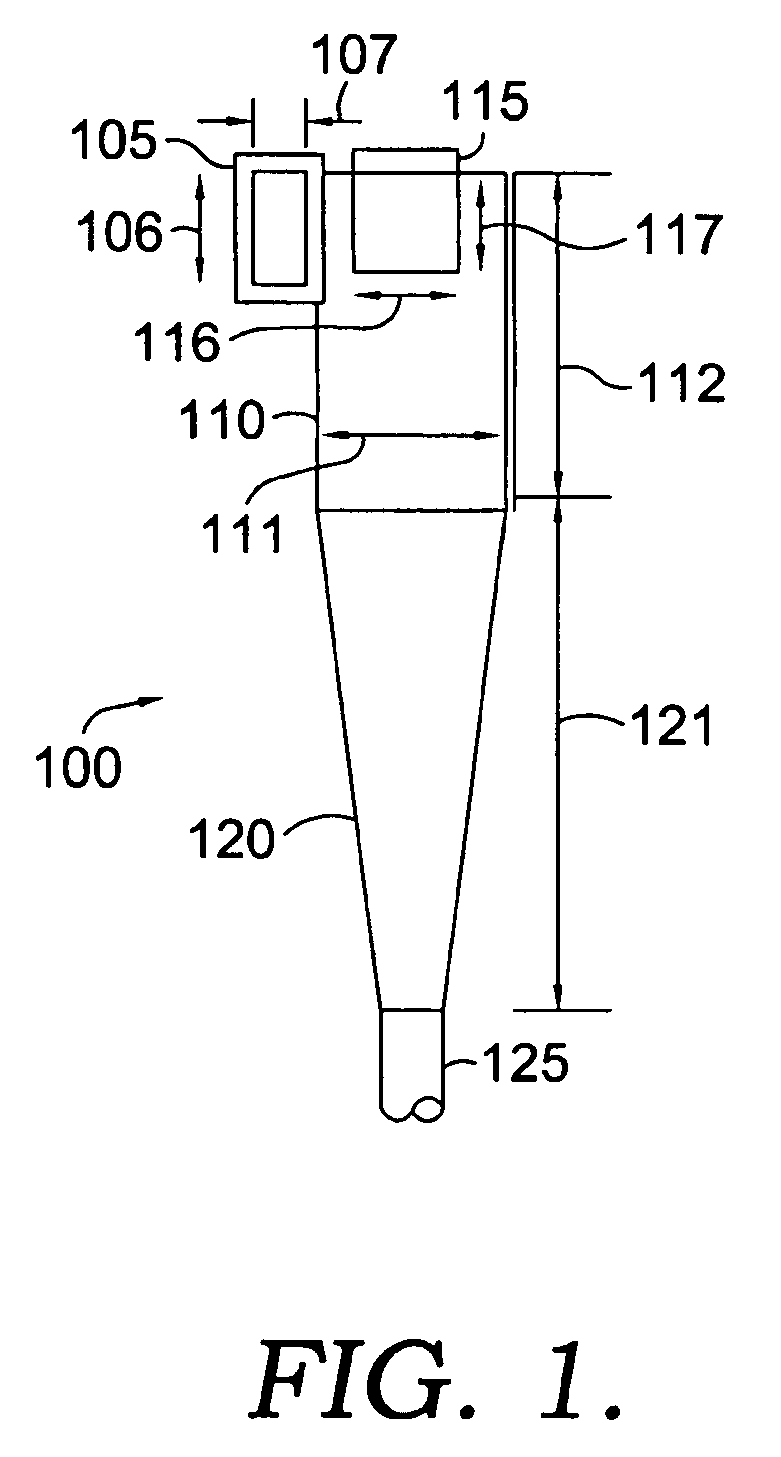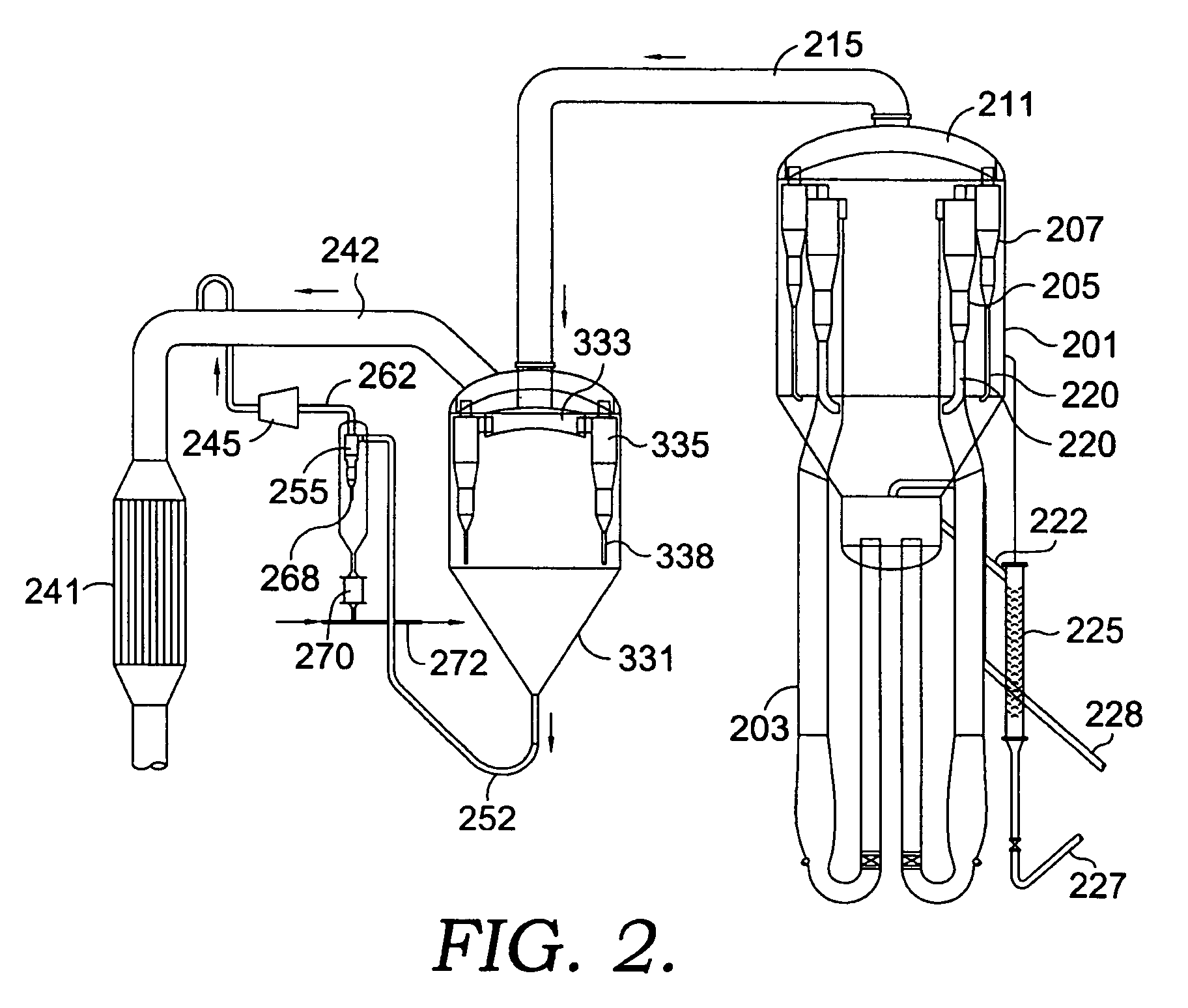Gas-solids separation device and method
a separation device and gas-solid technology, applied in separation processes, physical/chemical process catalysts, furnaces, etc., can solve the problems of insufficient solids in the flow, the number of stages is limited, and the addition of additional catalyst during operation to compensate for catalyst loss, etc., to minimize or prevent any loss of the desired hydrocarbon reaction product
- Summary
- Abstract
- Description
- Claims
- Application Information
AI Technical Summary
Benefits of technology
Problems solved by technology
Method used
Image
Examples
Embodiment Construction
I. Overview
[0017]This invention provides a method and apparatus for separating solids from a gas flow in a gas-solids reaction system. In particular, the process and apparatus of the invention provide improved solid particle recovery from a gas containing hydrocarbons via a novel configuration and method for operating sequential cyclone separator stages. This is accomplished in part by a method and apparatus that make use of a reaction system having two or more stages of separators that are external to the reactor. The external separator stages are used to recover additional catalyst for return to the reaction system, such as by returning the catalyst to the reactor or regenerator, while minimizing or preventing any loss of the desired hydrocarbon reaction product.
[0018]In an embodiment, the invention provides a gas-solids reactor with a multistage cyclone separator having 4 cyclone separator stages. The third and fourth cyclone separator stages are located in one or more disengagin...
PUM
| Property | Measurement | Unit |
|---|---|---|
| temperature | aaaaa | aaaaa |
| temperature | aaaaa | aaaaa |
| temperature | aaaaa | aaaaa |
Abstract
Description
Claims
Application Information
 Login to View More
Login to View More - R&D
- Intellectual Property
- Life Sciences
- Materials
- Tech Scout
- Unparalleled Data Quality
- Higher Quality Content
- 60% Fewer Hallucinations
Browse by: Latest US Patents, China's latest patents, Technical Efficacy Thesaurus, Application Domain, Technology Topic, Popular Technical Reports.
© 2025 PatSnap. All rights reserved.Legal|Privacy policy|Modern Slavery Act Transparency Statement|Sitemap|About US| Contact US: help@patsnap.com



